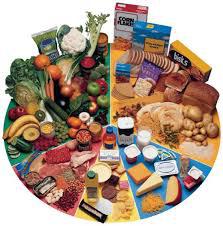A dancer can train for hours and hours each day, but without a proper diet their bodies will never be able to perform to its fullest potential.
Calories
A dancer needs to make sure they are taking in enough calories for their body. About 50 calories per kilogram of body weight is a good estimate. Not enough calories will compromise energy.
Carbohydrates
A dancer’s diet should consist of 55-60 percent carbohydrates. The reason that this is such a large percentage is that energy in the muscles comes primarily from carbs. Dancers who do not eat a sufficient amount of carbohydrates in their diet will compromise their training ability because their muscle glycogen levels will be low. Complex carbohydrates, such as bagels, cereal, bread, english muffins, pasta, and rice a good food to receive carbs from. The active body needs around 6-10 grams of carbs per kilogram of body weight. It is great to eat carbohydrates 1-2 hours before dancing and right after you stop dancing.
Fat
Fat provides the structure for all cell membranes, comprises the insulating layer around nerves, forms the base of many hormones, is needed for the absorption of vitamins, and is an important fuel for muscles. Fats should be around 10 percent (around 1.2 grams per kilogram) of your diet intake. To much or too little can be bad. Fatty acids are a source of energy, but to much saturated fats can cause diseases.
Protein
Protein is needed to repair the breakdown of muscle fibers. 1.4-1.6 grams of protein per kilogram of body weight is a good amount for an active person. Chicken and turkey are great sources of protein. Protein powders are not necessary for male or female dancers.
Micro nutrients
Micro nutrients include vitamins and minerals. All of these help to repair blood cells and muscles. Calcium is a macromineral and is very important for bone growth. Low bone mass and low calcium intake creates a large risk for stress fractures. Iron is also very important in transporting oxygen throughout the body. Dancers should be cautious about taking vitamin and mineral supplements. It is always better to get these nutrients through healthy food.
Fluids
During hard classes or long rehearsals, a dancer can lose up to 2 liters of water through sweat. This is why it is important to drink about one cup of water every 15 minutes while exercising.
“Consuming the right amounts and types of food and fluid will provide the body with “high performance fuel” necessary to achieve optimal training benefits and peak performance.”
http://www.iadms.org/?2

